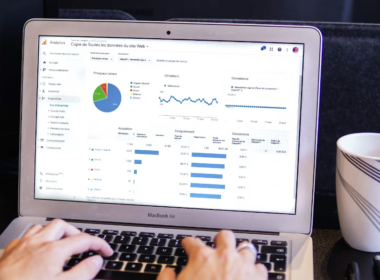Market analysis has become an essential tool for businesses of all sizes and industries that want to assess the external factors that impact their performance, strategy, and valuation. The financial services industry, which streamlines the management of money and includes banks, credit/lending companies, and insurance companies, not to mention the companies providing the technology to support them, must seriously review its old market research reports and keep up to date with the latest consumer trends to build and maintain a competitive edge. As technology advances, corporate finance professionals must adapt and stay ahead of the game.
It’s crucial to take advantage of data to gain valuable insights into customers’ ever-changing needs, getting a much deeper understanding of their behavior, preferences, and expectations. By scrutinizing industry trends, the competitive landscape, how individuals make purchase decisions, and the macroeconomic environment, it’s possible to pinpoint the risks and opportunities that can impact financial planning and analysis. Market research helps financial institutions tailor their offerings to their client’s needs. As we’re struggling with a severe economic downturn, trust in financial services has hit the floor, and consumers have started to look elsewhere.
Market Research Help Financial Institutions Make Informed Decisions About Product Development & Marketing Strategies
If customers are moving their accounts to competitors, you must do some analysis to understand what areas need improvement. Financial services are closely connected to people’s needs and goals, which can vary depending on age, income, and life changes. FinTech companies, which make available ingenious solutions that are accessible, cost-effective, and user-friendly, have disrupted traditional business models and created new opportunities, both in enterprise and consumer segments. Consumers, notably younger generations who are more likely to integrate technology into their lives and prioritize convenience, are very choosy, so it’s necessary to understand what they want.
Undertaking market research is useful in terms of robust and informed decision-making concerning the products and services offered and how to promote them. For example, you can evaluate the risks and opportunities of your project based on market research data and financial projections. The risks represent the potential threats or ambiguities that could negatively impact performance, valuation, and prospects, such as regulatory changes, market saturation, or competitive pressure. Crafting a financial strategy that covers the elaborate specifics a company must address helps financial services providers determine what possibilities to pursue, avoiding costly mistakes and minimizing risk exposure.
What Are the Best Ways to Conduct Market Research for Corporate Finance Purposes?
The first step to effective market research is to determine your scope and objectives. In other words, establish what the key questions that you want to answer are, what data sources and information you’ll use, and how you’ll measure and compare the results. Each study should have a clear, well-defined problem. As a way of exemplification, you might want to discern consumer preferences in digital banking, given that users aren’t satisfied with basic applications. In accordance with your desired outcomes, you can concentrate on different aspects of the financial market, such as size, growth, segmentation, profitability, or innovation.
After that, the next step is to:
Find And Analyze Industry Growth Drivers
To drive growth and profitability, it’s vital to understand industry-specific drivers. These factors, both external and internal, dramatically impact and shape the financial services industry, influencing its performance and direction. Take into account historical and projected data, in addition to spotting factors that have a broader influence on overall market trends and dynamics. Examples include but aren’t limited to technological changes, demographic shifts, social and environmental issues, and new entrants/substitutes. The aim is to best figure out how to compete with the largest corporations in your industry and attain the desired profits.
Examine Customer Behavior and Needs
Decide who will be included in the research because the process is expensive, and the last thing you want to do is to allocate resources to collecting unnecessary data. Settle ahead of time who will be included in the study and how the information will be collected, accounting for errors and sampling bias. There’s much more to consumer behavior than their desires and expectations, so do your best to understand the driving forces behind their actions by incorporating scientific methods and using notions from psychology and economy. Find out what Omnibus services for businesses are available in your area – obtain invaluable insights into issues that customers experience, their current level of satisfaction, and what they might want moving forward.
Explore The Macroeconomic Environment
The microenvironment represents the conditions that exist in the economy as a whole, which have the power to impact your market and, consequently, business performance. More often than not, it’s necessary to perform a DEPEST analysis, i.e., to identify the demographic, ecological, political, economic, socio-cultural, and technological forces that can affect how your company operates. Make sure to take into consideration GDP growth, inflation, interest rates, exchange rates, and fiscal and monetary policies. You can develop different scenarios based on possible outcomes of the aforementioned factors, assigning probabilities and sensitivities to each one to ensure you’re not drawing false conclusions.
Once You’ve Completed Your Market Analysis, Make Informed Decisions for Your Finance Activities
It’s essential to ascertain your data is accurate and up to date prior to using it for decision-making. The results of the study will inform the final design of the financial product and service and determine how it will be positioned in the marketplace. Incorporate market research into your financial analysis by accommodating the projections for your target customer based on the data and insights recently obtained. You can gauge revenue, costs, and profitability under various conditions. As an example, you can leverage the market size and growth rate to make decisions about what strategies to implement based on how much cash will be available from the sales generated.
All in all, if you start doing market research, you’ll uncover what challenges you’re actually helping customers address and how to communicate unequivocally. You can gather more in-depth information about their experiences and, above all, a more accurate picture of their genuine behavior.












